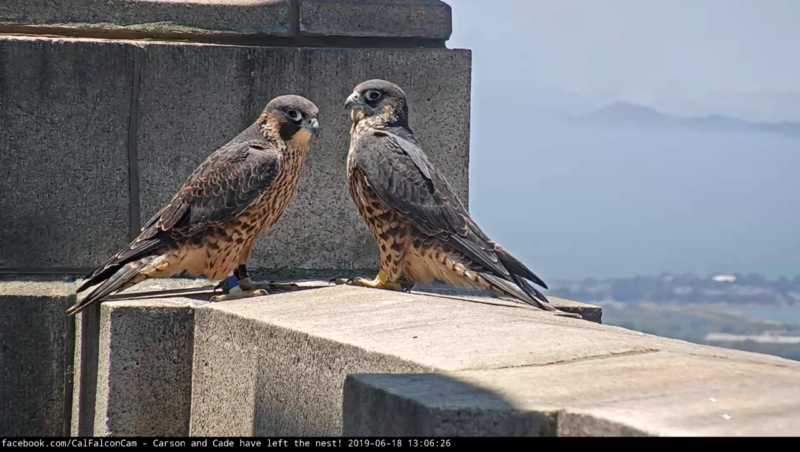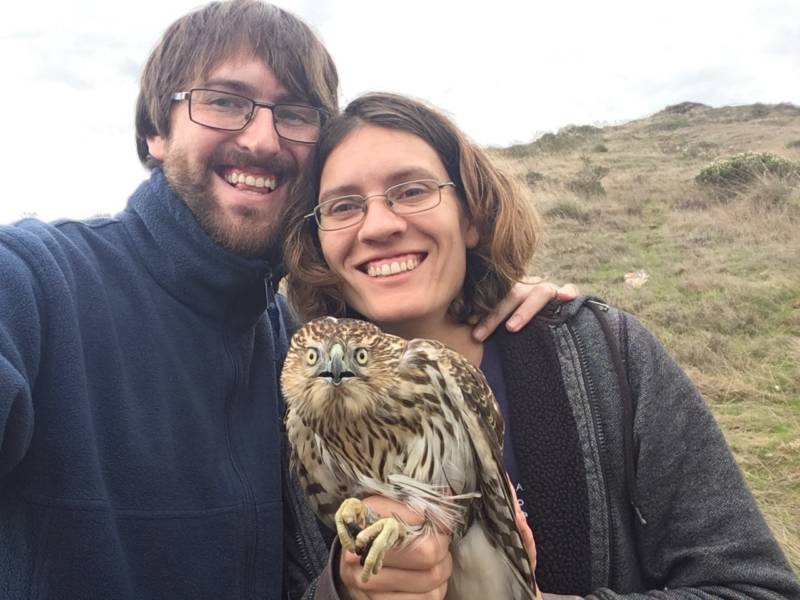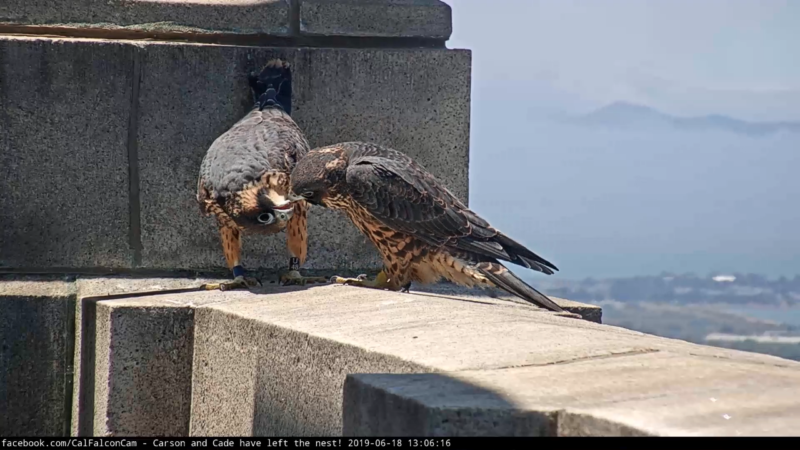Here's Why Peregrine Falcons Are the Top Guns of the Sky
UC Berkeley is known for a lot of things, from Nobel Prizes to football games at Memorial Stadium and top-flight students.
But lately, two campus residents have been getting a lot of attention: A pair of peregrine falcons have been wintering on the school’s iconic Campanile clock tower. The two raptors, named Annie and Grinnell — after the founder and first director of UC Berkeley’s Museum of Vertebrate Zoology — laid eggs and hatched chicks atop the famous campus landmark for the first time in 2017.

For the third time, they became proud parents this spring. Two male chicks, Carson and Cade, hatched on April 24 and flew for the first time on June 3. They’ve now graduated from the 307-foot-tall landmark into the wider world, experts say.
“In early July, they were still in the nest area, flying on and off the Campanile, and fed by their parents as they learned to hunt and fend for themselves,” said Mary Malec, a volunteer with the East Bay Regional Park District and the Golden Gate Raptor Observatory in Sausalito.
They’ve now dispersed and will eventually establish their own nesting territories.
A team of six people from the park district, raptor observatory, UC’s Museum of Vertebrate Zoology and the Institute for Wildlife Studies has been working closely to monitor the birds over the years.
They’ve helped to improve the falcons’ nesting site and arranged to band them for tracking.
Through their ongoing efforts to study the peregrines, researchers now know that one of Annie and Grinnell’s chicks, Lawrencium, has been spotted miles away in the Marin Headlands and on Alcatraz Island.
This team also organized a fundraising campaign to purchase web cameras, which they later installed and continue to oversee, sharing live videos and photos with the public through several social media channels. And the falcons, nicknamed the “Cal Falcons,” have social media accounts on Facebook, YouTube and Instagram.

“The excitement of all the Cal Falcons fans experiencing every moment together was truly rewarding,” said Sean Peterson, a Ph.D. student at UC and volunteer with the raptor observatory. “We had an employee from a vulnerable women’s/children’s shelter telling us that they had the stream playing at the shelter and multiple elementary school classrooms writing in with their name suggestions. It was so much fun to see how engaged the community was.”
The researchers also are documenting other types of data, such as cataloging prey remains found on the nest ledge and seen via camera, which provides researchers with an idea of their hunting range. And the cameras allow them to observe and record the falcons’ behavior.
“This entire nesting season has been so much fun,” said Peterson. “There was this constant sense of discovery this year because we’d never been able to see anything at the nest before. Being able to watch the chicks practice flying on the balcony and how attentive the parents were was really amazing. As a biologist, I was riveted all spring.”
While known for being the world’s fastest bird — peregrines have been clocked at diving more than 200 mph — these majestic birds were at risk for going extinct 50 years ago. Widespread use of pesticides such as DDT decimated native populations of peregrine falcons.
By 1970, California’s peregrine population had dwindled to only two known nesting pairs statewide. The federal government banned DDT in 1972. And successful restoration efforts spearheaded by organizations like The Peregrine Fund helped revive their numbers. By 1999, they were removed from the federal Endangered Species List. Recent surveys estimate that there are now 300 to 350 nesting pairs in California and more than 2,400 pairs nationwide.

“I think one of the most important things that Cal Falcons has done is bring a sense of the wild back to everyday life,” said Peterson. “It’s very easy to get lost in our own human world and forget that we’re still a part of a complex web of nature all around us, even in the largest cities. I think these falcons really helped people take notice of the wildlife living in their own backyards. Every single person I’ve talked to about the falcons has been incredibly excited about them. It has been a tremendous gift to play a part in sharing that excitement with everyone.”
